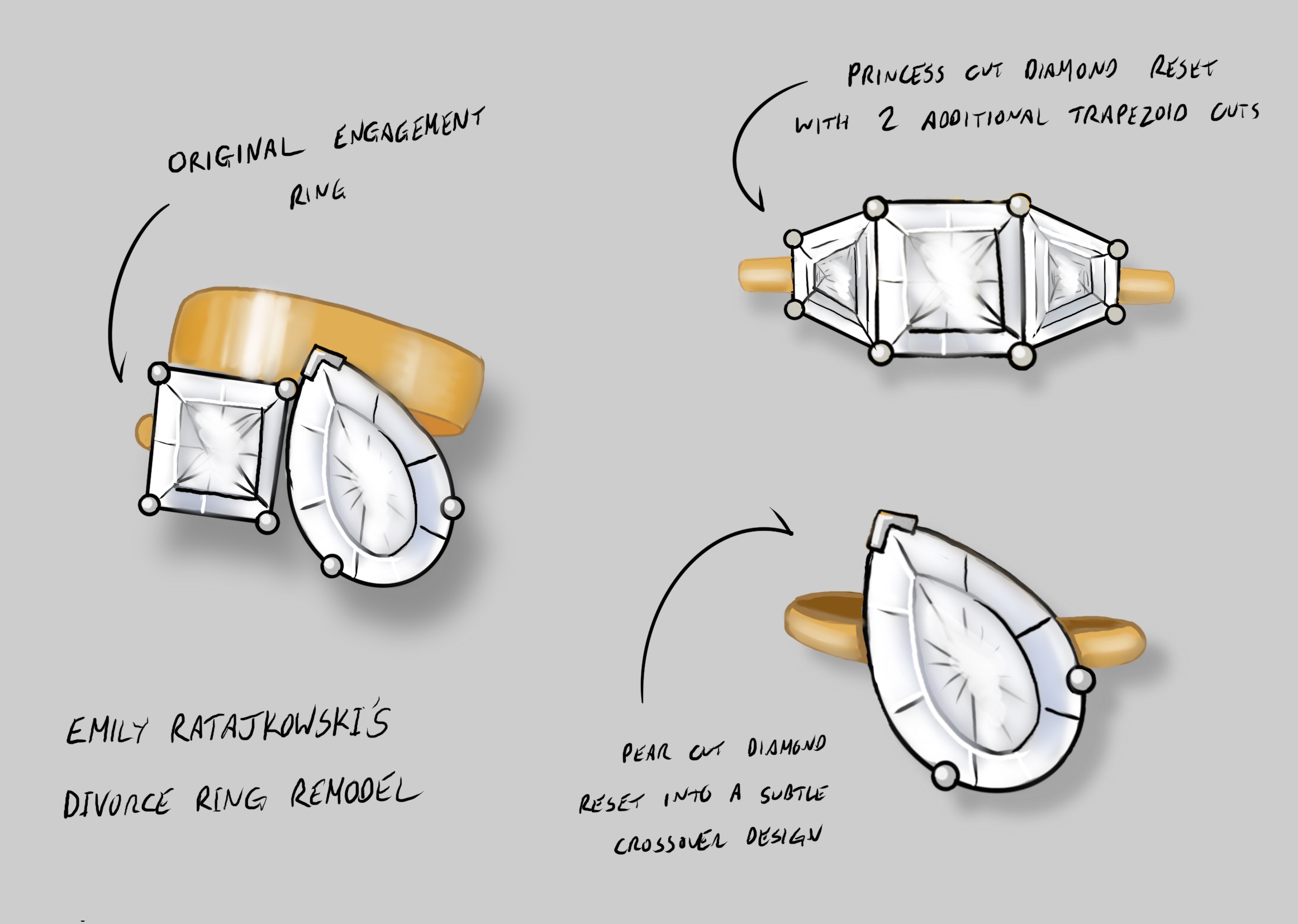
Transforming Pain into Beauty: The Rise of Divorce Rings
Transforming Pain into Beauty: The Rise of Divorce Rings In jewellery a Diamond is usually a symbol of love whether
choose a stone…
choose a setting…
choose a metal…
choose a finish…
…choose ring
21 Meeting House Lane
Brighton East Sussex
BN1 1HB
1273 773 544
21 Meeting House Lane
Brighton
East Sussex
BN1 1HB
Categories:

The History of Wedding Rings
Today, it’s hard to find a more powerful symbol of love and devotion than a wedding ring. More than safeguarding vows, wedding rings have the power to bind couples for life. The role of wedding rings in prehistory may be a bit unclear, but things became more romantic starting with the Egyptians.
Gold band with partner’s fingerprint laser engraved:

The Origins of Wedding Rings
Around the 4th millennium BC, the ancient Egyptians exchanged rings made of reeds, hemp, twigs, and other plant stems as a symbol of their eternal love. They believed the ring or circle to be a symbol of infinity and undying love. They also believed that through the ring finger of the left hand passed the Vena amoris or love vein, through which blood flowed directly to the heart. It’s probably due at least in part to this theory that the common practice of wearing wedding rings and engagement rings on the ring finger evolved in the Old World.
Horizontal & vertically set baguette cut diamond wedding ring:

It was the Romans who linked weddings rings to marriage. Worn only by wives, wedding rings in Roman times were associated with marital dowry and fidelity. Roman ring-giving customs evolved over the centuries and were integrated into Christianity.
Gents faceted wedding ring in 1/2 18ct white gold & 1/2 18ct yellow gold:

Braided plant rings may have been inexpensive, but they could break or decay in time, which called for more durable materials. Bone, leather, and ivory became materials of choice for wedding rings before metals became popular. Most metal rings were initially made from iron, with gold and silver rings reserved only for the very wealthy.
His & hers, laser engraved, diamond set infinity wedding rings:

The Middle Ages and The Renaissance
As materials evolved, so did ring styles. In medieval times, a popular type of wedding ring was the fede ring, whose design brought together two hands clasped in love and faith. Fede rings often featured a romantic engraving.
Rose gold, white gold & silver Mokume Gane wedding ring:

The Renaissance saw the rise in popularity of poesy rings, which consisted of a silver band in which was inscribed a poem. About the same time, the gimmel ring emerged, a type of wedding ring consisting of two interlocking bands. During the wedding ceremony, the bride and groom each wore one part of the ring. After the ceremony, the wife continued to wear the combined ring.
The practice of only the wife wearing the wedding ring continued into the early 20th century in many countries around the world, including the United States and Canada.
Top to bottom; claw set, Páve milgrain & channel set Diamond wedding rings:

Meanwhile, in Eastern nations, puzzle rings were widely used. These consisted of a wedding ring consisting of multiple interlocking pieces, which brides would have had a hard time putting back together once they took it off. That was intended—puzzle rings were meant to inspire wives never to take their rings off and so to always remain faithful to their husbands.
Rose gold, platinum & yellow gold leaf wedding ring: 
The Second World War and Modern Times
During the last few centuries, wedding rings have been closely associated with noble metals such as gold, silver, and platinum, which have added to them another layer of symbolism—that of permanence.
Unisex wedding ring with princess cut diamonds in a bevelled rubover setting: 
During difficult times such as the Second World War, wartime restrictions in England limited the mass and the amount of gold jewellers could use. This led to the creation of simple utility rings that young couples could more easily afford. It was also during the war that many married men sent to the battlefront began to wear a wedding ring as a reminder of their wives waiting for them at home. Humankind had come indeed a long way from their ring-tying in caves. While jewellers added precious stones to wedding rings throughout the centuries, it was only after the Second World War that diamond wedding rings became popular.
Rose gold, platinum & yellow gold diamond set filigree wedding rings:

In Our Times
Today, the history of wedding rings continues with a dazzling array of styles, materials, and precious stones, including vintage wedding rings, bespoke wedding rings, non-traditional wedding rings, and more. There have never been more options to choose from.
Yet despite the many different styles available, wedding rings continue to perform the same essential function. The symbolism with which they are charged makes them a powerful affirmation of love and loyalty.
[contact-form-7 id=”146″ title=”Dynamic Form”]

Transforming Pain into Beauty: The Rise of Divorce Rings In jewellery a Diamond is usually a symbol of love whether

Which finger is the engagement ring worn on? In the UK, as with many other Western countries, an engagement ring

U.S. Graduation Rings And The Symbolism Behind Them As Super Bowl LVIII (58) comes to an end the Kansa City
Tel: +44 (0) 1273 773 544
Email: ringdesign@hotmail.co.uk
21 Meeting House Lane
Brighton
East Sussex
BN1 1HB
Open 7 days a week
Mon-Sat: 10:30am – 5pm
Sun: 11am – 4:30pm